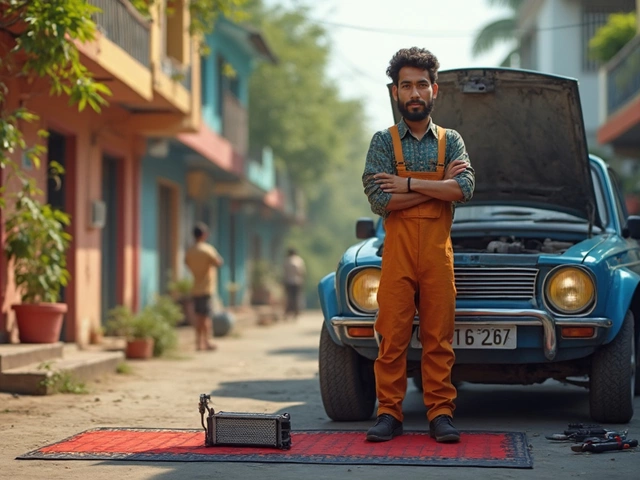Have you ever found yourself nervously pondering, "Is replacing a clutch a big job?" Well, you're not alone. Many car owners feel the stress when this issue pops up. Let's face it—clutches aren't exactly what we dream about fixing on a lazy Sunday afternoon.
First things first, it's good to know what the job really involves. Replacing a clutch is not just about swapping out parts. It's about getting to know your vehicle on a deeper level. The process can be pretty involved, requiring some mechanical know-how and more than just a few hours. But before you panic, let's break it down step by step.
- Understanding the Clutch Replacement Process
- Time and Skill Level Required
- Cost Insights
- Tips for a Smoother Replacement
Understanding the Clutch Replacement Process
So, you’ve hit the point where your vehicle's clutch is acting up. It’s slipping, making those weird noises, or just plain not doing its job. Time to dive into what clutch replacement involves.
In a nutshell, replacing the clutch is about getting to the essentials of your vehicle. You’re dealing with the clutch disc, pressure plate, and often the flywheel, which are key to your car’s driveability. That’s why this isn’t a quick fix kind of deal—it takes a bit of time and elbow grease.
Steps to Replace a Clutch
Getting into the nitty-gritty, here's a broad overview of the steps:
- Lift the Vehicle Safely: You’ll need to get your car up on a lift or stands securely. Safety first, right?
- Remove the Transmission: This is probably the heftiest piece of the puzzle, requiring unbolting and maneuvering out the transmission. That's why it might require a bit of muscle—or at least a friend with some muscle.
- Take Out the Old Clutch: With the transmission out of the way, removing the worn-out clutch is next. Pay attention to its placement because the new one has to go back the same way.
- Check and Replace: Examine the flywheel for wear and tear. If it's worn, either get it resurfaced or replaced altogether. Also, replace components like the pilot bearing and throwout bearing while you're at it.
- Install the New Clutch: Align and fit the new clutch carefully, ensuring everything lines up before tightening things down. This is where a clutch alignment tool can be a lifesaver.
- Reattach the Transmission: This part’s all about carefully sliding the transmission back in place and securing it properly.
- Test Drive: Finally, everything’s back in place; take the car for a spin around the block to make sure the clutch works smoothly and there are no odd noises or issues.
Believe it or not, having a clutch replacement done isn't necessarily about being the strongest person in the room—it's more about patience and precision. Whether you’re doing it yourself or working with a professional, understanding these steps gives you a solid leg up on what to expect from the process.
Time and Skill Level Required
So, how much time are we really talking about when it comes to clutch replacement? Well, it’s not a quick fix. On average, you’re looking at anywhere from 5 to 8 hours to get the job done right. Yep, it's pretty time-consuming! And that’s in a shop with all the right tools.
Skill level is another big thing to consider. Let’s be honest, this isn’t the kind of job you want to tackle unless you’re pretty comfortable under the hood. Car maintenance and repair skills are a must, along with a decent toolset. You’ll need to be handy with a wrench and understand how to safely support and maneuver under your vehicle.
What You'll Need to Know
- Understand the transmission system as you’ll need to detach and reattach the gearbox.
- Get familiar with the hydraulic or cable clutch linkage, as this is crucial for the process.
- Ensure you have a clutch alignment tool handy, which makes lining things up properly a breeze.
Handy Tips
If you're thinking of doing it yourself to save on automotive repair costs, consider teaming up with someone who’s done it before. This is one of those jobs where two heads (and four hands) are better than one.

Cost Insights
So, let's talk money. When it comes to clutch replacement, the cost can vary quite a bit. It's like shopping for a new phone. Different models, different prices. You get the picture.
Generally, you're looking at anywhere from $500 to over $1,500 for a complete clutch replacement. It really depends on the make and model of your car, and where you're getting the job done. Sports cars or luxury vehicles? Yeah, those can hit the higher end of the spectrum.
Breaking Down the Costs
A good chunk of that money goes into labor. Replacing a clutch isn't a quick job, and mechanics typically need 4 to 6 hours, or even more. Labor rates can range from $75 to $150 an hour. No wonder the bill adds up!
Then there's the cost of the clutch kits themselves. These kits usually include the clutch disc, pressure plate, and release bearing. Depending on quality, they can range from $100 to $500. Again, exotic cars might push this even higher.
| Car Type | Average Cost |
|---|---|
| Sedan | $600 - $800 |
| SUV | $800 - $1,200 |
| Luxury/Sport | $1,200 - $1,500+ |
Hidden Costs and Tips
It's not just about the upfront cost; think about potential hidden costs. Sometimes, during the job, unexpected issues crop up that might need extra parts or labor. A sudden surprise leak? Extra cost.
A way to potentially save a bit is comparing prices from different auto shops. Some might offer bundle deals for parts and labor!
Also, if you're handy with tools, doing the job yourself could cut costs significantly. But beware—without the right skills, you might end up with a bigger headache. Weigh your options carefully.
Tips for a Smoother Replacement
Thinking about doing a clutch replacement yourself? It's totally doable with the right approach and tools, plus it can save you some serious cash! Here are some tips to help make the process as smooth as possible.
1. Get the Right Tools and Parts
Before you dive in, gather all the necessary equipment. You don't want to realize you're missing something halfway through. Check your toolkit for essentials like a wrench set, jack stands, and screwdrivers. Clutch kits are easy to find but ensure you have all components that fit your specific model.
2. Follow a Step-by-Step Guide
If it’s your first time, having a detailed guide can keep things on track. Many online forums and resources provide step-by-step instructions specific to various vehicles. Consider watching videos to see the process in action.
3. Safety First
Working under a car can be hazardous if you're not careful. Always use quality jack stands, never rely on a hydraulic jack alone—your safety’s worth the extra effort.
4. Take Pictures
When disassembling, take photos along the way. It might sound like a hassle, but it’ll make reassembly a breeze.
5. Patience is Key
Don’t rush the job. Rushing can lead to mistakes, and errors might complicate things further down the road. Take your time, especially when it's a new experience.
6. Seek Help if Needed
If at any point you feel overwhelmed, don't hesitate to reach out to a pro. It’s better to ask for help than risk damaging your car or, worse, hurting yourself.
Bonus Tip: Track Your Progress
Keen to know how long the job might take? Here's a rough idea:
| Experience Level | Estimated Time |
|---|---|
| Beginner | 6-8 hours |
| Intermediate | 4-5 hours |
| Expert | 2-3 hours |
Happy fixing, and remember, replacing your clutch might not be the easiest task, but the feeling of accomplishment afterward is well worth the sweat!




